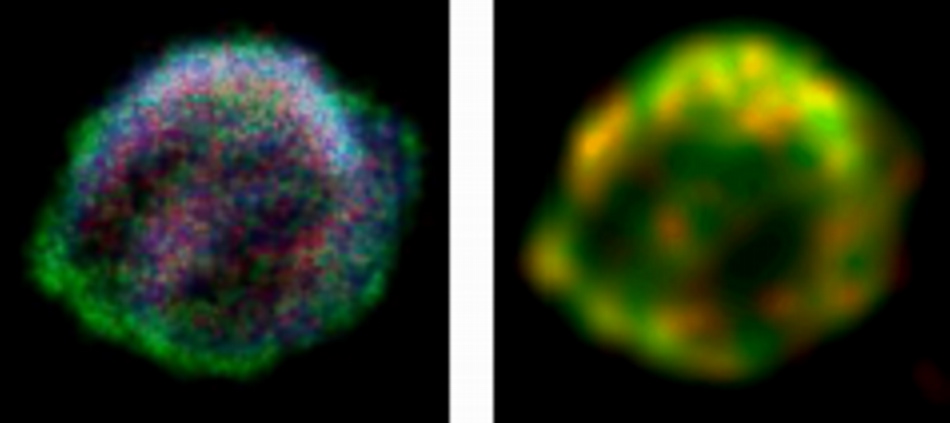
 Credit: G. Cassam-Chenai et al., 2003, Astronomy & Astrophysics, in press.
Credit: G. Cassam-Chenai et al., 2003, Astronomy & Astrophysics, in press.
Exhumations
Astronomers are like forensic scientists - by studying supernova remnants, the "unearthly" remains of dead and exploded stars, they hope to reconstruct conditions inside the living star. An earlier observation of the Cas A supernova remnant surprisingly suggested that the star turned itself inside out during the explosion. Is this normal behavior during a supernova? To find out, astronomers need to study other remnants. The images above are new X-ray observations by the XMM-Newton X-ray observatory of the remnant associated with Kepler's supernova, a stellar explosion studied by the astronomer Johannes Kepler after its explosion in AD 1604. The image above left shows a 3 color image of the remnant where blue represents emission from the element silicon, red represents emission from extremely hot iron, and green represents medium-energy X-ray emission. The image on the right is a color X-ray image in which medium-energy X-rays are in green while high energy X-rays are in red. These images suggest that Kepler's remnant does not show the chemical mixup seen in the Cas A supernova remnant.
Last Week *
HEA Dictionary * Archive
* Search HEAPOW
* Education
Each week the HEASARC
brings you new, exciting and beautiful images from X-ray and Gamma ray
astronomy. Check back each week and be sure to check out the HEAPOW archive!
Page Author: Dr. Michael F. Corcoran
Last modified Monday, 26-Feb-2024 17:45:51 EST


